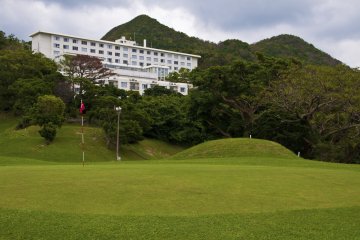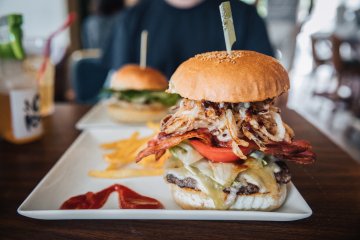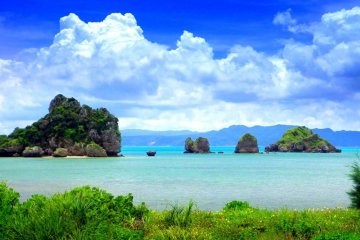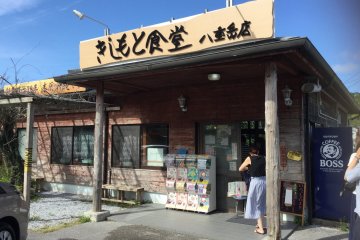For over 115 years, three generations of Nakahodo family members have been making Okinawa soba noodles the traditional way -- that is, using alkaline water made from the ashes of burned wood. The subtle flavor of the resulting noodle can be appreciated by those with a discerning palate.
Wood from the Itajii tree, an evergreen that is common in the northern part of Okinawa's main island, is burned. The ashes are collected and placed in a large bucket with water, allowing the particles to settle overnight. The mineral rich alkaline water is then used in mixing the wheat flour in the noodle making process. Since 1905, Kishimoto Shokudo's noodles have been made the very same way.
Expect the traditional toppings to accompany this conventional Okinawan comfort food. The noodles are topped with slices of rafute (Okinawan style braised pork belly), kamaboko (fish cake), and green onions. The bonito and pork broth is clear and light.
There are essentially only four menu items: extra large soba at ¥850, large soba at ¥750, small soba at ¥600 and a bowl of jushi rice for ¥300. With regulars as well as noodle pilgrims coming from faraway for a taste of tradition, the wait to get in can be long, especially around lunch time. When we arrived at 2 p.m., all tables were occupied and there was a line to get in. Kishimoto Shokudo has a main shop five minutes away but I recommend visiting the branch as it has more seating and more parking spots available. This is a great food stop on the way to or from Okinawa Churaumi Aquarium.
Take your time to browse the memorabilia collected over the years including newspaper and magazine articles, photos and autographs of famous people who have eaten here.









